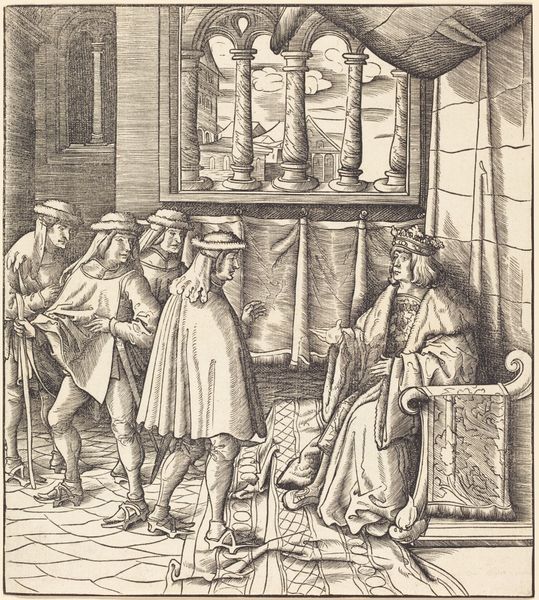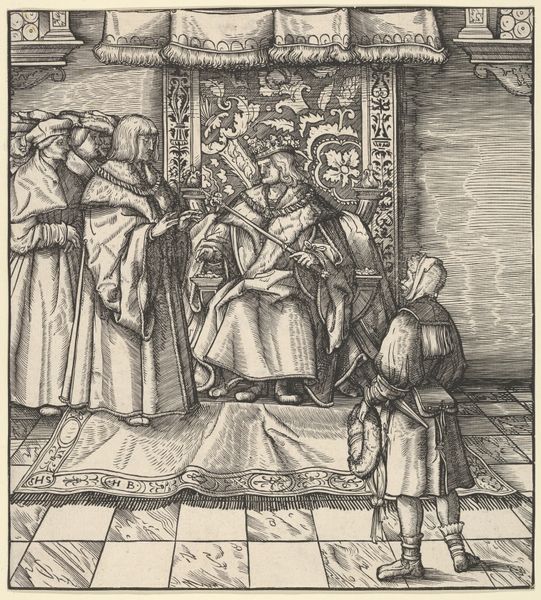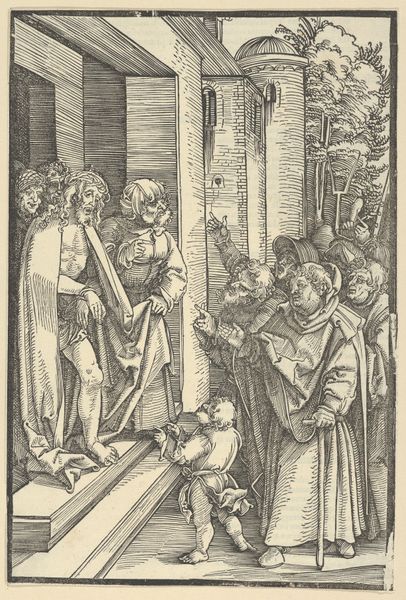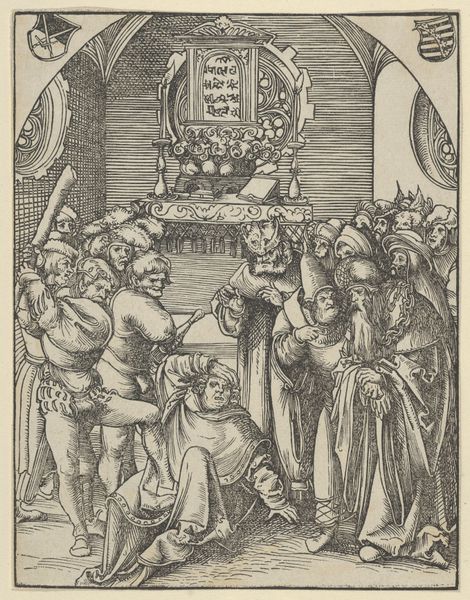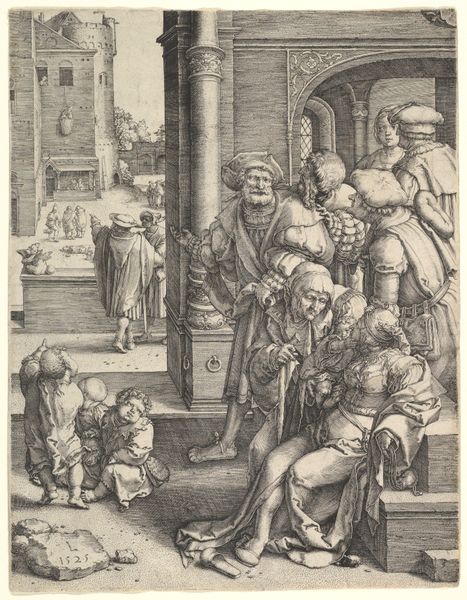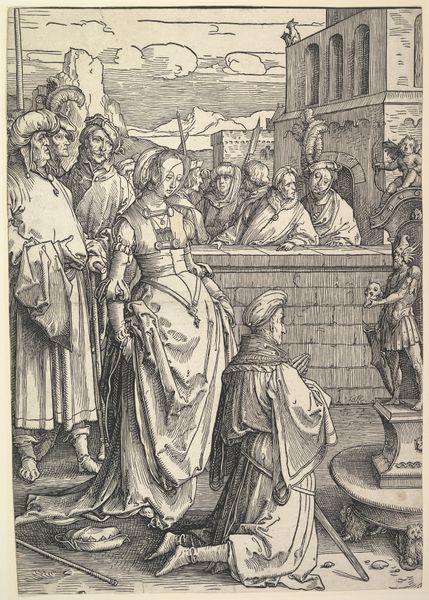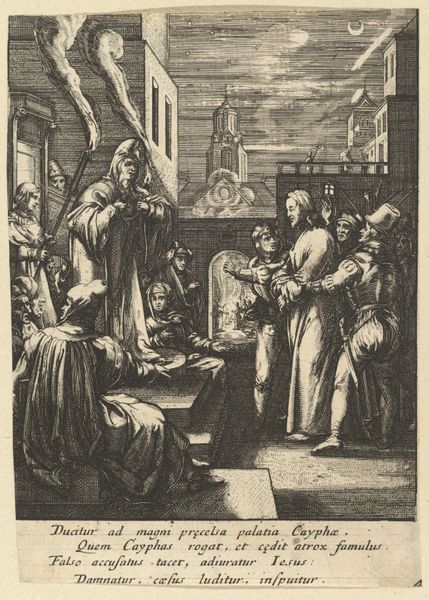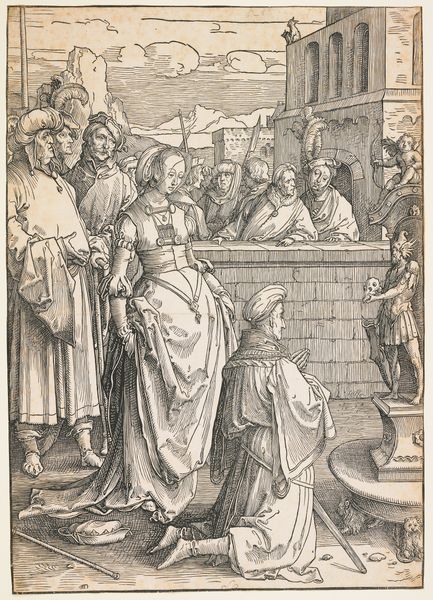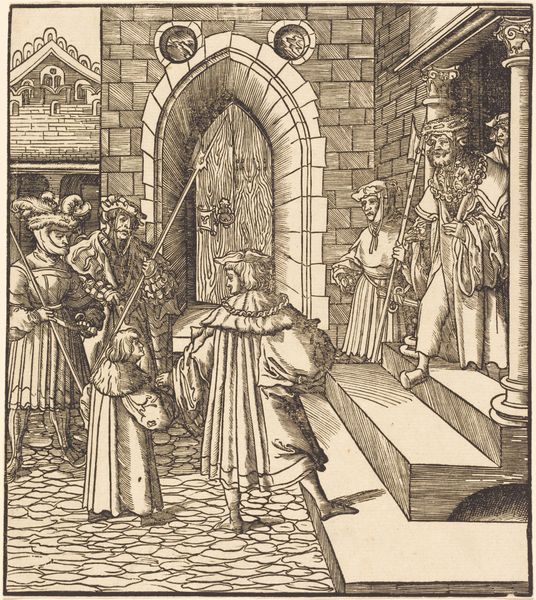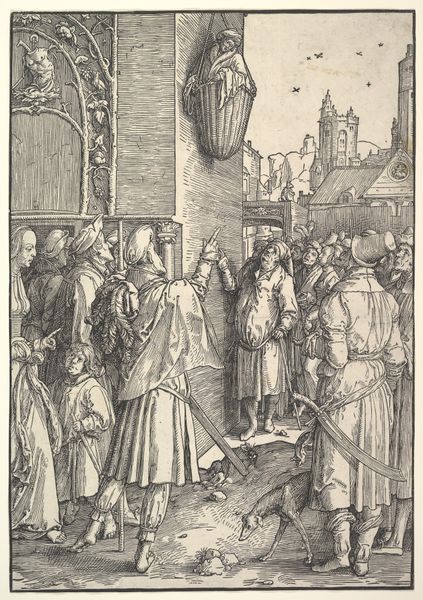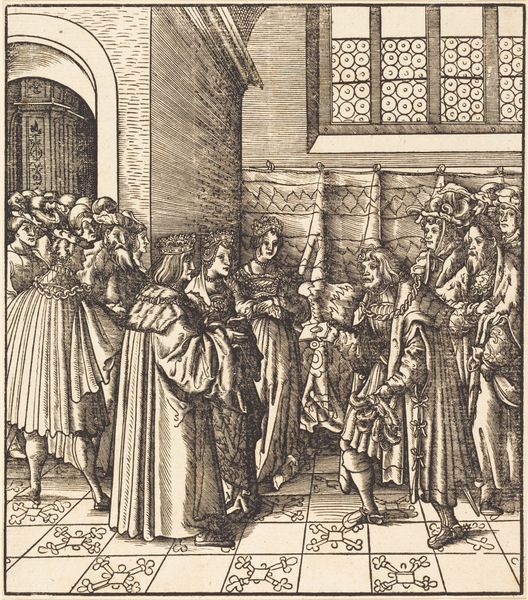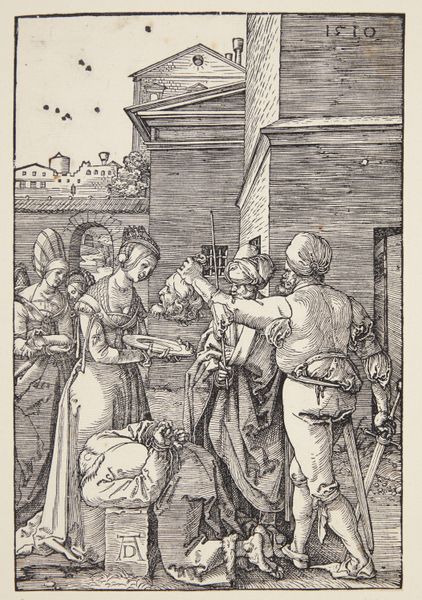
The Old White King Sending His Messengers to Portugal 1514 - 1516
0:00
0:00
print, woodcut
#
narrative-art
# print
#
figuration
#
woodcut
#
history-painting
#
northern-renaissance
Copyright: National Gallery of Art: CC0 1.0
Curator: The intricacy of line in this Northern Renaissance woodcut is remarkable, isn't it? This print, created between 1514 and 1516, is entitled *The Old White King Sending His Messengers to Portugal*, and it’s by Leonhard Beck. Editor: It does feel…almost claustrophobic. So many figures crammed into the scene, all these rigid lines and patterns. Is that intentional? Like, is it a comment on power? Curator: Definitely. Consider the historical context: Maximillian I’s diplomatic efforts, his aspirations for a vast network of alliances. Beck’s woodcut is both propaganda and a visual representation of early 16th century European power dynamics. Note how the king, draped in that heavily patterned robe, sits enthroned, receiving messengers. There is such visual tension from his calm and centered energy, versus the messenger boy with such girlish innocence approaching. Editor: The detail is so compelling but the flattening of space and lack of tonal variation in the medium make it difficult for the eye. You know, I find the attempt at historical representation through what reads now as almost cartoonish imagery really fascinating. It is almost comedic with such high drama and heavy symbolism! What is in the king’s mind with such deep contemplation? Curator: You touch on an important point about Northern Renaissance art! The use of symbolic objects to reveal someone’s soul. A glass vessel on the left held with great care by a servant hints to ideas around purity and transparency. What might be considered objective renderings are actually highly constructed portrayals meant to guide moral interpretation. Editor: Ah, the old 'reading the signs' routine. It’s almost as if the objects become characters in their own right. So, we have historical propaganda masquerading as historical narrative with these inanimate narrators too! It's a fascinating, if somewhat heavy-handed, layering of message upon message. Curator: It makes you think, what narratives are we crafting now, consciously or unconsciously? What symbols are we embedding, and what interpretations will they invite centuries from now? Editor: A potent question. This isn't just history etched in wood, is it? It's a mirror reflecting our own ways of seeing, and our persistent habit of shaping narratives to serve the present.
Comments
No comments
Be the first to comment and join the conversation on the ultimate creative platform.

